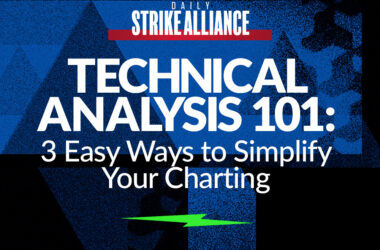Good morning, traders…
Ben here.
You all know the feeling…
You’re holding calls, watching the stock push higher. Momentum is strong, and the setup looks perfect — until suddenly, it slams into an invisible wall and reverses hard.
Or maybe you’re eyeing a dip, thinking it’s time to buy, only to watch the stock sink even lower the moment you enter.
If you’re wondering what just happened to your promising trade, the answer is simple: you ran into a key price level.
These are the hidden battle lines in every chart — the areas where buyers and sellers have clashed before (and where they’re likely to fight again)…
Understanding (and identifying) these levels isn’t just useful — it’s essential. They can tell you where a stock might stall out, where it could bounce, and when the next big move is about to happen.
Miss them, and you’re trading blind. Spot them, and you’ll start to see actionable setups that were previously invisible to you.
If I had to pick one part of my trading strategy that helps me more than any other — it’s my ability to spot key levels, every time.
But how do I know which prices (and ranges) are critical to watch? And how can YOU learn to see them yourself?
Let me show you how to understand, identify, and trade around key price levels…
The 3 Types of Key Price Levels to Watch For
In general, there are three kinds of key price levels that I’m always looking for:
1. Historical Support and Resistance
Take it from a history major — if you want to trade successfully, you’ve gotta know your history.
And that doesn’t just apply to social, political, or trading history. It’s just as important when looking at the historic levels on your charts.
One of the first things I do when analyzing a stock is zoom out to a daily or weekly chart. I want to see levels where the stock has consistently struggled to break higher — or where it has bounced repeatedly.
- If a stock keeps dropping to the same price level and bouncing back up, that’s a strong area of historical support. Buyers have repeatedly stepped in there to defend that price.
- If a stock keeps hitting a certain price and failing to go higher, that’s historical resistance. Sellers are unloading shares at that level, making it tough for the stock to break through.
These levels don’t have to be exact numbers — sometimes they’re zones rather than precise handles.
But if a stock has reacted at the same level multiple times in the past, it’s a price point you need to watch in the future.
2. Key Psych Levels and Big Round Numbers
While every stock has its own unique support and resistance, there are certain price levels that hold weight across the market.
Big round numbers like $20, $50, $100, and $200 tend to act as psychological support and resistance levels.
If you think about this, it makes logical sense. if a stock has been running higher, a lot of traders are going to look at $100 as a nice, clean exit point.
And when enough people sell at that level, it creates resistance. The stock may struggle to push through because the selling pressure is too strong.
On the flip side, these big round numbers can also act as support. If a stock has been dropping, traders might see $50 or $100 as a good place to buy. If enough bulls step in at that level, the stock could bounce hard to the upside.
These levels aren’t guaranteed to hold, but they have a much higher probability of leading to a reversal than some random level does.
Start watching for these round numbers, and you’ll notice stocks getting rejected (or bouncing) at these levels repeatedly.
3. Intraday Levels: High of Day, Low of Day, and Opening Price
If you’re day trading, you need to be aware of how a stock is moving within the trading day.
Three of the most important intraday levels are:
- High of Day (HOD) – The highest price the stock has hit during the trading session. If a stock breaks above the HOD, it can trigger momentum buying.
- Low of Day (LOD) – The lowest price the stock has hit during the session. If a stock breaks below the LOD, it can trigger panic selling.
- Opening Price – Where the stock started trading when the market opened. This can act as support or resistance throughout the day, especially for stocks with big morning moves.
Use these levels to make short-term decisions. A stock breaking above the HOD might signal strength, while a break below the LOD could mean weakness.
And the opening price often acts as a battleground — if the stock stays above it, bulls are in control. If it stays below, the bears are winning.
This is how you identify the key levels. Nothing too complicated.
Before we go, let’s look at:
💰The Biggest Smart Money Bets of the Day💰
- $5.5 million bullish bet on WMT 04/17/2025 $110 calls @ $2.51 avg. (seen on 2/14)
- $5 million bullish bet on XLI 03/28/2025 $143 calls @ $0.84 avg. (seen on 2/14)
- $2.5 million bullish bet on INTC 03/21/2025 $20 calls @ $5.01 avg. (seen on 2/14)
Happy trading,
Ben Sturgill
P.S. If you want to start getting in on Smart Money setups before the trades take off…
TODAY, February 17 at 4:00 p.m. EST, the great Danny Phee is hosting a VERY SPECIAL WORKSHOP to break down the biggest Smart Money bets for next week.
Stop missing huge Smart Money trades — Click here to reserve yours now!
*Past performance does not indicate future results





